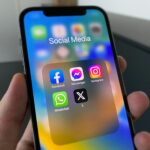CivicScience keeps a pulse on the latest beauty trends through our database of over 130 million consented profiled respondents. If you’re interested in seeing more insights like these, register for our U.S. Beauty Buyer webinar here.
Self-care is one of those words that’s become a catch-all for anything related to spending money to look or feel better. However, just as individuals are unique, the tools and techniques that are considered self-care can vary. And as it happens, beauty is one self-care outlet that continues to gain traction.
In fact, new CivicScience data reveal that a total of 40% of the U.S. Gen Pop often uses beauty as a form of self-care, with the percentages rising for U.S. women (53%) and even more so for U.S. mothers (55%).

Join the Conversation: How much time do you typically dedicate to beauty-related self-care activities in a week?
But self-care, as noted, is a broad category. So what kinds of self-care are Americans doing when it comes to beauty? Generally speaking, U.S. adults are most likely to enjoy a visit to the hair salon, as well as practice a skincare regimen for self-care, with 29% loving on their locks and 28% tending to their skin. Other notable mentions are wearing makeup (25%) and getting a manicure/pedicure (23%).
However, the numbers shift when the data concentrate on moms, 44% of whom indicate wearing makeup as their top self-care activity of choice (even more so than U.S. women at 43%). This is followed by a visit to the hair salon and practicing a skincare regimen. As anticipated Mother’s Day retail gift sales (including flowers) look less robust than last year, and as general merchandise sales lag behind, beauty companies may want to take note that moms are eager for makeup products to help them feel good – on the inside and out. That’s even further emphasized by mothers being the most likely to say they like to try new beauty products as a form of self-care.

Since makeup and skincare are such popular self-care activities, it comes as no surprise that respondents are generally in favor of shopping for new beauty products. Additional polling shows that while 26% of the Gen Pop say they enjoy shopping for new beauty products in general, 31% of women and 39% of moms feel the same.*
Clearly, when it comes to self-care-minded consumers, moms are the demographic to watch. And with 58% of moms living in a household with an annual income of $50K+ per year, many are more likely to have access to the disposable income to splurge on the products and experiences they desire. However, although beauty care is important to the majority of U.S. mothers, 39% say they lack the time and/or the financial resources to invest as much into it as they would like to (outpacing U.S. women by three points).

Voice Your Opinion: How do you perceive the role of beauty products (skincare, hair care, makeup) in enhancing your self-care practices?
Although beauty retail sales are noted to have slowed in 2024 after gaining momentum over the pandemic, the “treat mindset” which propelled prestige beauty sales over the pandemic as noted by Circana, could still have a market among mothers who see beauty as a form of self-care. Impulse spending has a role to play, especially in light of the fact that 74% of moms say they splurge on themselves as shown by CivicScience data. The impact of their consumer behavior on the beauty self-care industry is – and likely will be – a trend to follow.
Discover a wealth of consumer beauty insights that delve deep into the industry with the CivicScience Beauty Buyer Report. To learn more about how CivicScience’s solutions give clients an edge over the competition, get in touch.
*n=542+ responses from 05/06/2024 to 05/07/2024








